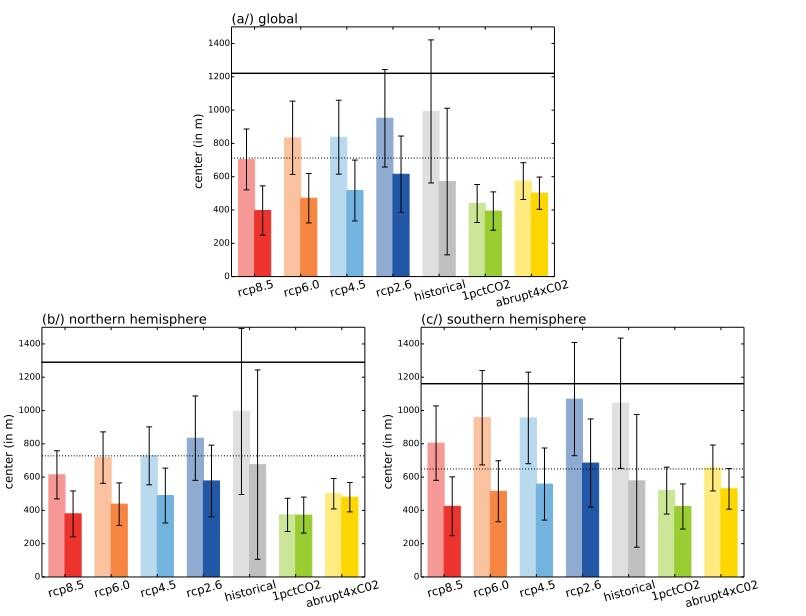Complementing thermosteric sea level rise estimates

Lorbacher, K., Meinshausen, M., and Nauels, A.
Revised: 01 Jun 2015 – Accepted: 11 Aug 2015 – Published: 02 Sep 2015
Abstract. Thermal expansion of seawater is one of the most important contributors to global sea level rise in the past 100 years. Yet, observational estimates of thermal expansion are sparse, mostly limited to the upper ocean layers, and only a part of the available climate model data is sufficiently diagnosed to complete our quantitative understanding of thermosteric sea level rise (thSLR). In order to support usage of results of the Coupled Model Intercomparison Project Phase 5 (CMIP5), complement observations and enable the development of surrogate techniques to project thSLR, we complete diagnostics of CMIP5 models. We obtain 30% more thermal expansion time series than currently published. We find that upper 700 m (2000 m) observational estimates need to be augmented by 36 ± 9% (15 ± 6%) on average to be considered for a global sea level budget. Half of the total expansion originates from depths below 480 ± 250 m – with the range indicating scenario-to-scenario variations. Lastly, to support the development of surrogate methods to project thermal expansion, we calibrate two simplified parameterisations against CMIP5 estimates of thSLR: one parameterisation is suitable for scenarios where only hemispheric ocean temperature profiles are available, the other, where total ocean heat uptake is known (goodness-of-fit: ±5 and ±9%, respectively).
Link to full article: http://www.geosci-model-dev.net/8/2723/2015/
Citation: Lorbacher, K., Meinshausen, M., and Nauels, A. (2015) Complementing thermosteric sea level rise estimates, Geosci. Model Dev., 8, 2723-2734, doi:10.5194/gmd-8-2723-2015
